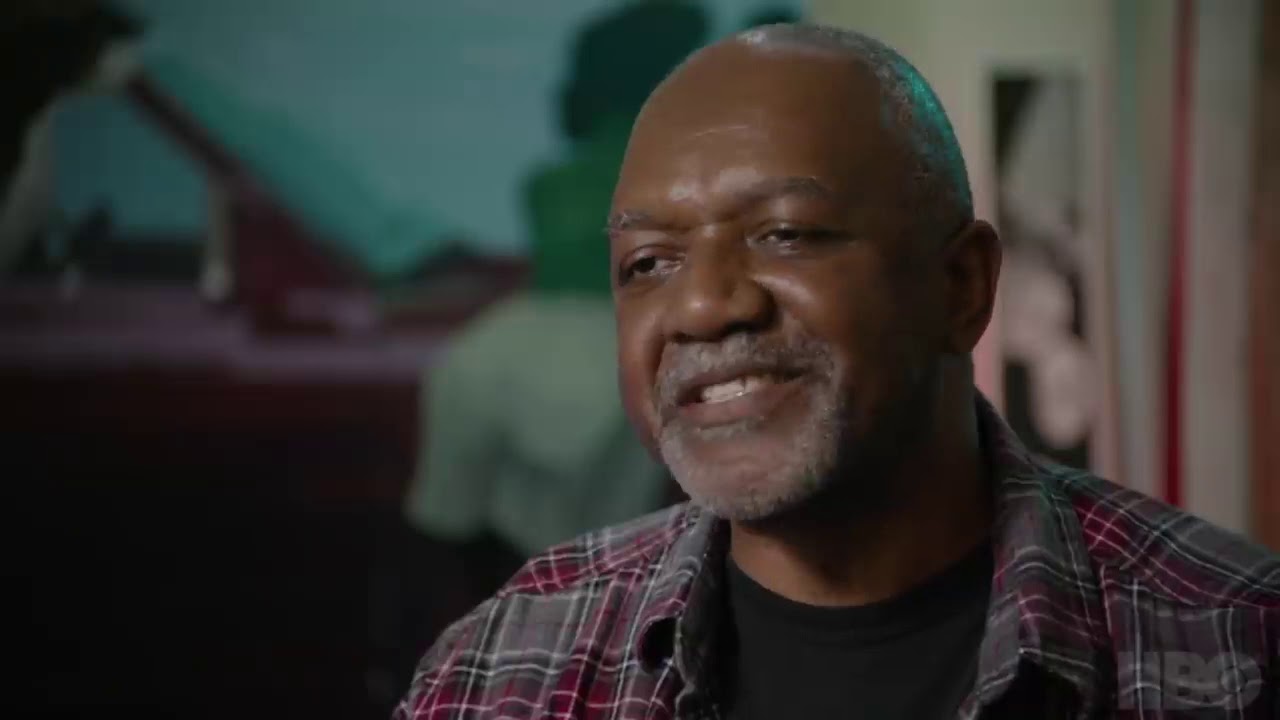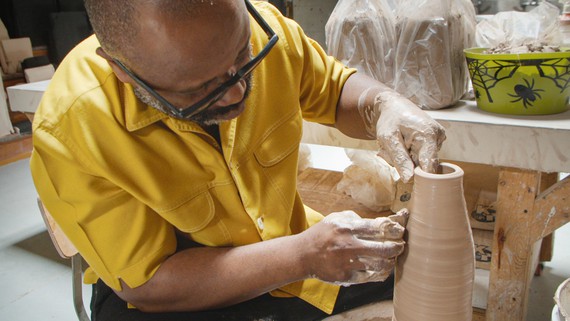
African American artists have been around since the founding of the United States. But as in so many other corners of American history, they’ve been largely left out of the story of American art until quite recently.
A Fisk University (Nashville) professor and art curator, David C. Driskell, was interviewed by Tom Brokaw on “The Today Show” in 1976 about a monumental exhibition he’d pulled together and taken to museums across America in its Bicentennial Year.
“Two Centuries of African American Art” brought attention to 19th and 20th century Black artists, some of whom achieved a measure of fame, but whose work had never been gathered together in one celebratory overview.
As we hear Driskell, then and in a fresh interview for “Black Art: In the Absence of Light,” lament the oversight and celebrate the work, we meet current artists — some old enough to have caught the touring exhibition, others who grew up in a house that had the book that spun out of that LA County Museum to Brooklyn, Chicago to (The High Museum) Atlanta tour.
Artists such as Romare Bearden and Hale Woodruff, Jacob Lawrence, Faith Ringgold and Betye Saar — many still living at the time — could be celebrated for the movements which they were a key part of and what they represented.
Filmmaker Sam Pollard uses that “200 Years” exhibit as his framework and introduction for “Black Art,” as a jumping off point as he speaks with the most celebrated artists of today who, to a one, recall the lasting influence of that exhibition and how awareness of that in their upbringing pointed them towards creating the lively African American arts scene of today.
The film’s generous sampling of artists working today has the viewer thinking “representational” (as opposed to abstract) long before an artist explains why that tends to be the style embraced by Black painters, sculptors and even performance artists today. It wasn’t just the artists of the past who were “in the absence of light,” ignored or whitewashed out of history. Black people as subjects of visual art have been historically rare.
So Kara Walker, Kerry James Marshall and others show us Black people, Black faces and Black life in a way that’s outside of the mainstream art world of collage, abstraction, surrealism and visual metaphor.
We consider Barack Obama’s presidential portrait and meet the woman who painted the iconic Michelle Obama as First Lady painting.
We hear of the fights in the 1960s over an infamous Metropolitan Museum of Art exhibition on Harlem history, photographs which brought attention to one particular documenter of Black life there, was curated by a committee of white art experts and built largely out of white photographers’ vision of the place.
The sexism of the time, the Bearden-headed “Spiral Group” excluding female artists like Ringgold and Betye Saar from inclusion in the ’60s, is discussed, as is the context of artists first giving thought to “a Black aesthetic” in art.
Marshall shows us the paint selection that covers the gray scale spectrum of how painters depict African American people as subjects — seven paints, with any given painter’s choice of color or colors to use pointing to added meaning and degrees of realism or abstraction that they’re going for.



“In the Absence of Light” doesn’t cover early history, merely mentioning some important portrait or landscape painters of the first hundred years of African American art.
The quality of the works shown and the fame of the artists interviewed is undeniable and impressive.
One thing I was struck by, hearing from the collection of academics, curators from Virginia to New York and listening to the artists and even a collector of African American art (the rapper Swiss Beatz) is how “mainstream art world” they are.
These are the same sort of knowledgeable, top-schooled, largely upper middle class and faintly pretentious art cognoscenti you could find in any “opening” anywhere in America. We’re not meeting self-taught or underprivileged novelty “primitive” artists, the kind most often profiled on “The Today Show” and its ilk. We’re meeting Harvard academics and assorted museum (Virginia Museum of Art, etc) curators, all women and men of color.
In the larger art world, they speak a common language and present a shared expertise that marries knowledge with a hint of hauteur. The color-blind term that leaps to mind is “bougie.”
That, like the historical limitations of the film, narrows the focus of “In the Absence of Light.” It’s still an eye-opener for any casual art buff, realizing that a lot has happened in that scene since Basquiat, and an awful lot happened before David C. Driskell had the gumption and the thick skin to dare to suggest there was a Black art aesthetic, and that there were more than 200 years of African American art that was too good and too important to ignore.
MPAA Rating: Unrated
Cast: David C. Driskell, Betye Saar, Kerry James Marshall, Faith Ringgold, Kara Walker, Carrie Mae Weems, Hank Willis Thomas
Credits: Directed by Sam Pollard. An HBO release (premiering Feb. 9).
Running time: 1:25

